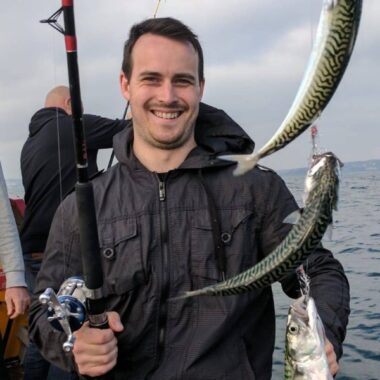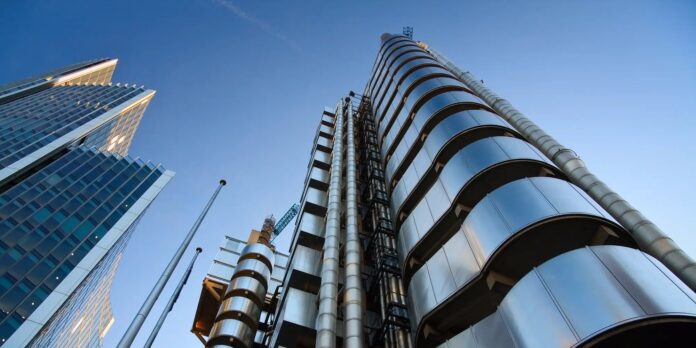“It’s not a homogenous class of business, unlike the motor insurance industry, where you and I are potentially similar risks if we drive similar hatchbacks.”
“Everything’s insurable”, pronounces Ben Lawn in the sort of sing-song voice that lets you know this is a running-joke for industry insiders.
And yet, despite a background in science and work as an insurer at Allianz, Lawn had not contemplated the existence of fish farm insurance until he stumbled across an article on LinkedIn talking about the algae blooms in Chile and the response to them.
Then it all fell into place.
Lawn continues, “I’m a marine biologist by training. That’s my undergraduate degree and my masters. I’m a lifelong angler and scuba diver; I came out of Marine Biology and didn’t know what on earth I was going to do.”
“It was a very competitive marketplace at the time, and when I graduated, I fell into random industries, transport and energy and then, eventually, into insurance – many people fall into insurance, it’s not necessarily what we intended to do since we were little children,” he says with a smile.

“I got in touch and there happened to be a vacancy upcoming at GAIC. I was very fortunate”.
Syndicates
GAIC – the Global Aquaculture Insurance Consortium – was set up in 2009 to insure fish and shellfish farms for stock mortality exposures that are difficult to place in the local market in most countries. The facility is administered by Lloyd’s broker AHJ, with capacity provided by certain Syndicates at Lloyd’s of London.
As Lawn explains, the company provides services in those territories where AHJ and Lloyd’s hold a license to conduct (re)insurance business and where there are regulated aquaculture activities.
“Our underwriting team are based in the City of London, dealing with locations as far away as Tasmania, Chile, Canada … and then anywhere in between”.
Both offshore and onshore farms, including RAS, can be covered. Both types off production have a long list of potential covered perils.
And what about a recent case in Chile, in which a farmer claimed that the nets to the pens had been sabotaged – would insurance companies really cover that kind of claim?
“Sabotage? Yes. ‘Malicious Acts’ as we would call it in our wording,” he says. “It tends not to be such an issue for most clients. We also include malicious acts of environmental or animal rights groups, we’ve fortunately not seen a lot of this though. More typically we would be concerned by disgruntled locals, that may feel that their local aquaculture industry is to their detriment. Alternatively clients may have feuds with prior employees or competitors.”
Bespoke
As Lawn explains, every contract is bespoke. “There’s no standard approach. If the client comes to us and says, ‘I want a lower deductible’, we say, ‘okay, fine’. This obviously costs more, whilst if they retain more of the risks and have a lower deductible cost, it costs less.”
“Deductibles are the commercial term for policy excesses and in aquaculture they have to be pretty high, since fish are prone to natural mortality. There’s no point saying, ‘’Oh, I’ve lost one salmon, let’s make a claim’. Deductibles can also be tailored by peril, such as a higher deductible for storm in a storm prone region. As ever, a client retaining more risk will be reflected in the pricing.”
Lawn continues, “We determine a premium rate and that would be applied normally to the average projected value for the policy period of stock on site, creating a deposit premium that is adjustable at expiry on actual values exposed. A premium rate is based on a lot of factors; that’s why we require a lot of information on a proposal form. There is not standardisation in the aquaculture market – no fish farm is identical to another. We gain comfort from a risk when we understand it better and this knowledge is drawn from comprehensive placing information.”
“It’s not a homogenous class of business, unlike the motor insurance industry, where you and I are potentially similar risks if we drove similar hatchbacks.”
RAS risks
“The new industry of raising market sized salmon in RAS is an example of just how different a risk can be, even for the one species. Compared to offshore production, the risks of incidents such as blooms, sea lice infestations or storm should be far lower. However, there are plenty of other risks not typically associated with traditional production, such as mechanical/electrical failure and fire. Issues such as hydrogen sulfide poisoning are also still being tackled by the operators in this industry”.
In cage production, there is also differentiation. Take Norway for example, “Their advantage is all those fjords, they’ve got sheltered sites, there’s so much production in these relatively less wave prone locations. They have geography and a long track record in their favour. So yes, Norway would typically achieve relatively lower premiums on their salmon stock than some other regions. In contrast, a country such as Chile would typically have higher premium rates, partly due to their additional natural catastrophe exposure.”
“Don’t forget things like predation – physical damage caused by predators or aquatic organisms. If something rips a hole, seals or sharks, that can be a concern of ours, especially if it leads to significant escapes. This is another of our covered perils.”
A relief for farmers worried about attack by giant tuna.









